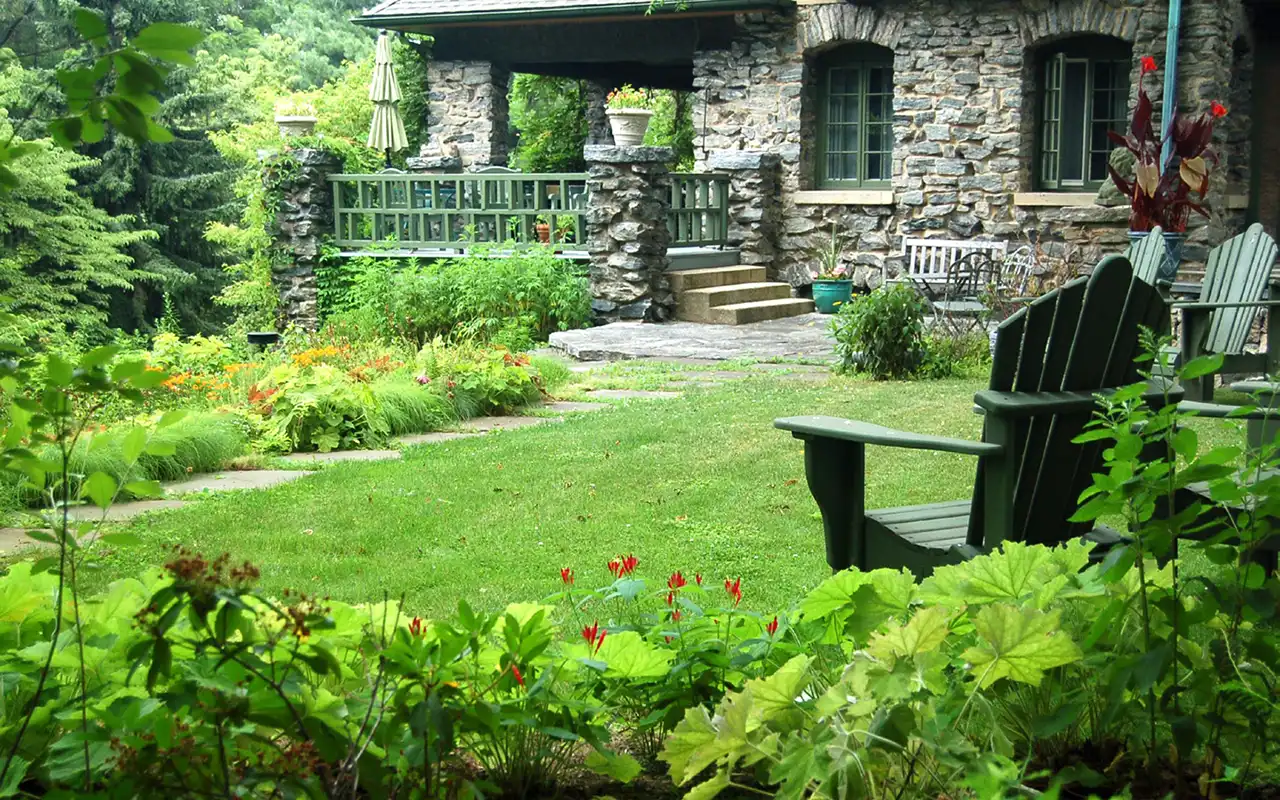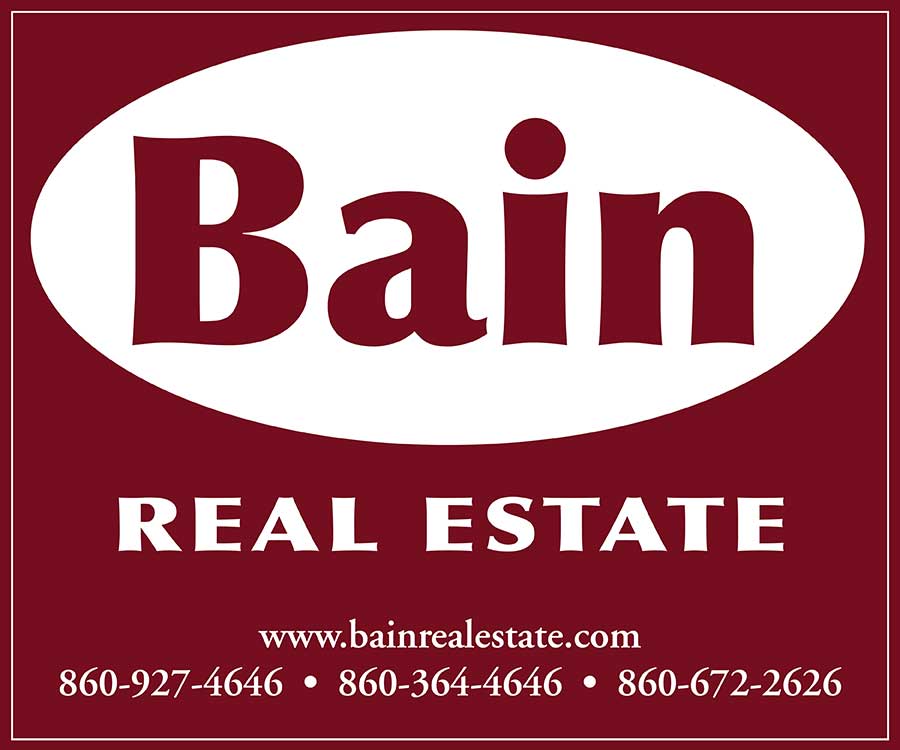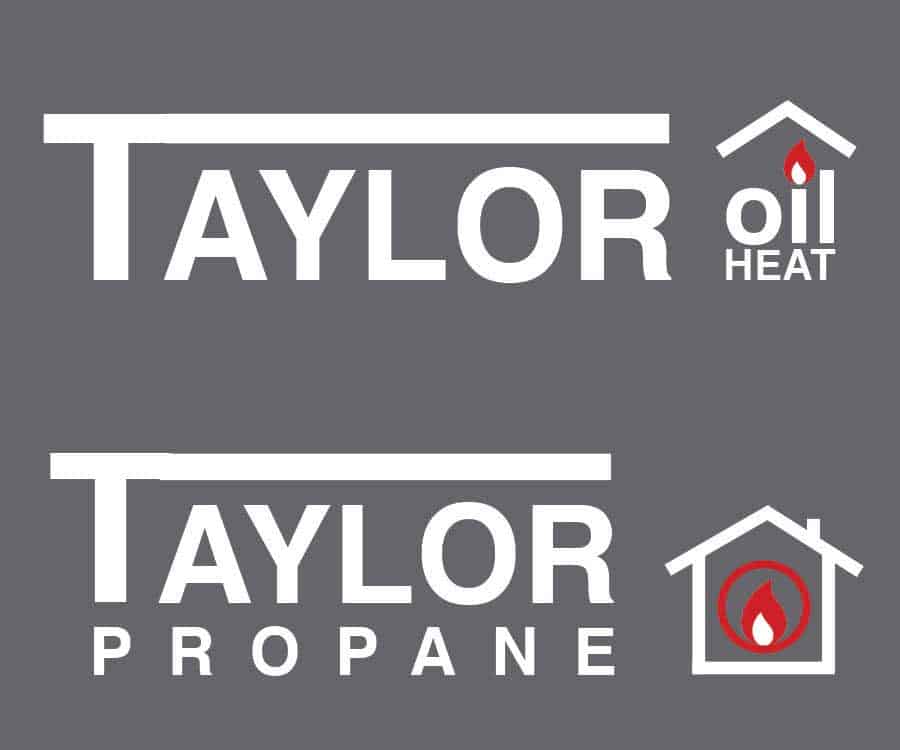Real Estate

Curb Appeal
A gradual movement away from fertilized, mown green lawn with a band of spirea hiding foundations towards an intentional, sophisticated approach to residential landscaping is happening all around us. At the same time that sellers are “upgrading” bathrooms and kitchens to increase the value of their home and enjoy the improvements themselves, they are paying more attention to their front yard and exterior spaces.
Since COVID, nursery sales have exploded and interest in gardening has been permanently ignited. When a buyer views a home on Zillow or drives by a For Sale sign in the front yard, the exterior of a home is their first impression. It’s not just the freshly painted front door but the natural environment that surrounds a home. It may be why houses sell at the highest prices in the spring and summer in the Northeast. Sales results show that appropriate, stylish landscaping can add 10% or more to the price of a house, and that the return on investment on well-placed plants, shrubs, and trees exceeds 200% of their cost. Done well, a pleasing front yard conveys an elevated sense of design and maintenance that buyers will assume is carried throughout the house. Ignored or executed haphazardly, an uncared-for garden will cause buyers to look elsewhere.
“The story of every house starts at the street. Plants and hardscape can capture the homeowner’s personality and help establish a calm space within an urban environment. The front garden is valuable real estate. Why not make the most of it,” states Scott Shrader in The Art of Outdoor Living.
Think before digging
Improving curb appeal and your enjoyment of your home with landscaping is less expensive and time consuming than architectural upgrades – plus you can often do it yourself. The first step is to take a look at what exists. That’s what Lenore Mallett, a real estate agent with William Pitt Sotheby’s, did when she purchased her Victorian home in Lakeville, CT.
“The first project we took on was taking down the neglected hedge that was sucking all light out of the yard. In total, to take back the yard and to counteract almost 25 years of neglect, we took down close to 35 trees so we could start with a fresh canvas. The house finally felt like it could breathe.” No wonder it took so long for this house to find a buyer!
Next, remove dead or diseased plants, and trim and prune any existing vegetation so you can actually see what you have to work with.
Consider carefully what you want to accomplish. If your house is by a busy road, a screening hedge or a split rail fence with perennial plantings could modify the “too close to the road” perception. Your design approach should be in harmony with the residence, its location, and the neighborhood.
Does the front yard seen from the street relate to the color, architectural style, and size of the home? Traditional, stately homes look impressive with formal, symmetrical plantings, craftsman style homes benefit from an English cottage garden, while contemporary homes might utilize straight edge plantings and ornamental grasses. The overall effect should enhance the façade of your house, its front door, entrance, and walkway.
Beyond mulch
Although an application of dark mulch is the cheapest, quickest solution for making an existing garden look better for immediate showing, professional landscape architects and garden designers have some basic rules that can help guide you to rethink the front yard for the long term.
1. Avoid both barren and cluttered. Create orderly crisp edges around plantings to signal the intentionality of the landscape design. This could be edging around beds, mulching, or stone or brick borders.
2. Select plants that will thrive in your location by researching light, soil type, moisture, and climate zone. Looking at nearby gardens and examining plant zone information on tags at your local nursery will help narrow down the choices. It’s best to buy plants that are grown locally and suited to Zone 5 and below. Think of using native perennial plants, the ones that come back spring after spring, to increase biodiversity, and attract birds and pollinators.
3. Consider maintenance and environmental impact. These days people are decreasing the size of lawns and introducing lower maintenance, sustainable areas of native plants.
4. Stick to a limited palette and plant selection. Less can be more. Too much seems overwhelming and a lot of work.
5. Use dramatic focal plantings for emphasis.
6. Remember year-round seasonal appeal. Sequence bloom from early spring bulbs to peonies, summer hydrangeas, brilliant fall leaves, and evergreen species for the winter.
7. Select specimen trees, ideally native species, scaled to your yard and sited appropriately. Deciduous trees that lose their leaves can shade in the summer, offer brilliant autumn color, and allow passive solar heating in the winter while evergreen trees can add interest all year long. Remember the best time to plant a tree is last year.
Plan ahead
Is there a meadow in your future?
One increasingly popular alternative to a vast green front yard is a wild meadow. Meadows are a “thing” right now, but creating and maintaining them is not as easy as sowing seeds from a wildflower envelope. The process requires time and expertise and begins with site preparation, according to Larry Weiner, master meadow maker. “It begins with the elimination of existing growth. The most common methods are repeated applications of short-lived herbicide, mechanical removal, or a combination of the two.”
Next comes the seed layout, selection and planting – even meadows have a plan, according to Weiner. “The best plant arrangements combine the designer’s creativity with the patterns that occur in nature, as naturally occurring meadows rarely have a homogeneous mix of species evenly scattered throughout the area. More commonly, an individual plant or plant group, usually including grasses, will dominate, with smaller colonies of plants occurring in pockets or drifts. Replicating this arrangement can yield a natural and appealing meadow which relies more on the form and textures of grasses interplaying with subtle touches of color, rather than an unattainable constant explosion of bloom.”
After seeding comes mowing and weeding to maintain the meadow. Once in place a meadow is less work than a big lawn, but it does involve commitment and care. An alternative to a meadow or lawn for large acreage, especially in our rural area with large parcels and long driveways, could be a productive field of hay that could also reduce a property assessment for tax purposes.
Going native – not all the way
Native plants have entered the mainstream of gardening as people become aware of the difference they can make to our environment. Doug Tallamy, ecologist and co-founder of non-profit Homegrown National Park, offered advice to home sellers whose gardens include native plants: “Information on ecological landscaping should be included in the listing, so buyers understand the ‘luxury value’ of buying a home that plays an essential role in biodiversity and, in turn, their responsibility in keeping the property productive.”
Native plants can serve a variety of purposes, and usually an attractive native plant can be substituted for an alien species. It doesn’t have to be all or nothing, and native plants can layer with more familiar ornamental non-natives and established plants. Native plants like grey dogwood may be too wild for the front yard and can effectively be used in the back yard edges to create a wildlife corridor, and decrease the fragmentation of the landscape.
Front yard for now and the future
“It’s become clear that buyers want a space they can enjoy,” commented Mallett. “And although I can’t help but think about resale (at some point) there comes a time that you do have to embrace your home and make choices for your own enjoyment and lifestyle. Luckily, I think the choices we have made will translate to a solid resale value.” Neighbors are thrilled with the rejuvenated garden at their street corner and the flowering native red bud trees that grace the front yard. When the time does come to sell, the landscaping effort, whether pollinator garden, native plants, rose borders, or a meadow should be documented and explained to the listing agent as an asset of the home. And don’t forget to take photos of your garden in all seasons as it grows and changes.•
Christine Bates is a registered real-estate agent in New York and Connecticut with William Pitt Sotheby’s. She has written about real estate and business since Main Street Magazine’s first issue in 2013.




